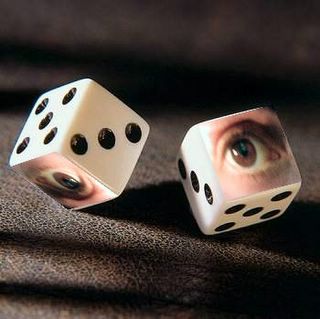At this time of year, one popular image is that
of a toy train under the Christmas tree.
In that spirit, this month, we'll look at one of the most popular
train-themed games, Ticket to Ride.
Designed by Alan R. Moon, Ticket to Ride was
published in 2004 by American-based company Days of Wonder. Since then, it has gone on to win 4 awards,
including the German Spiel des Jahres (Game of the Year), and spawn several
followup board games, a card game, and computer and iPhone versions.
Ticket to Ride is very easy to learn, with only
three choices on your turn, and simple mechanics. Players start the game with a number of
trains in their color, a few colored train cards, and three Destination cards,
of which you may optionally discard one.
The board is a map of the United States, with
routes of one to six links in length connecting various cities. These routes are claimed by players using the
same number of colored train cards as there are links in the route. Colored routes require the train cards be a
matching color. Gray routes can be
claimed by any color, but not mixed –
the cards must all be the same color.
On your turn, you may do one of three things:
score immediate points by laying down some of your trains and claiming a route
as described above; draw three destination cards (you may choose to discard up
to two); or draw two train cards one at a time from either five face-up
choices, or the face-down draw pile.
There are wild cards, which count as two draws if taken from the face-up
selection.
Destination cards show two cities to connect by
whatever contiguous series of routes you can before the game is over. At the end of the game, these will either
score their value as bonus points if completed, or subtract that value as a
penalty if not. A common strategy is to
fulfill your initial destinations, then draw more, discarding difficult ones,
in order to score extra points at game's end.
The last round is triggered when one player is
left with 2 or fewer trains at the end of their turn. Each player (including the player who
initiated the endgame) gets one final turn before scoring. After everyone's final turn, Destination
bonus points and penalties are scored, and finally, the player with the longest
contiguous length of trains gets a 10-point bonus.
This is an excellent game to introduce people
to modern designer games, due to its simplicity, as well as the tactile feel of
the little plastic trains. Later
spin-offs and expansions add new elements to gameplay, such as a Globetrotter
bonus for most completed Destination tickets.
As always, if you'd like to join me for a game,
you can contact me at gamerseye@swbell.net. I've also started a Family Games Showcase
group on the Mira Lagos Nextdoor site.
Come join us!


No comments:
Post a Comment